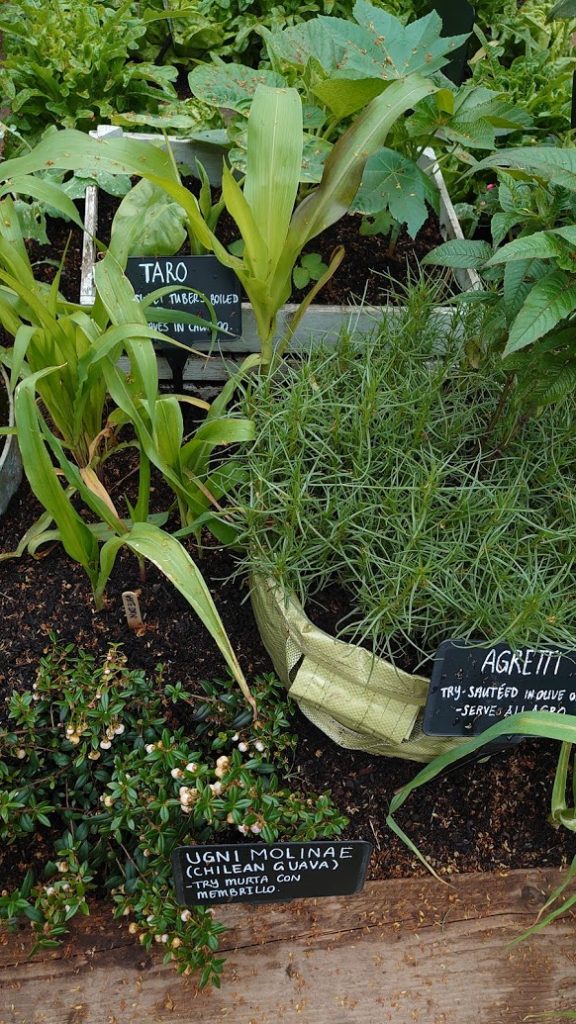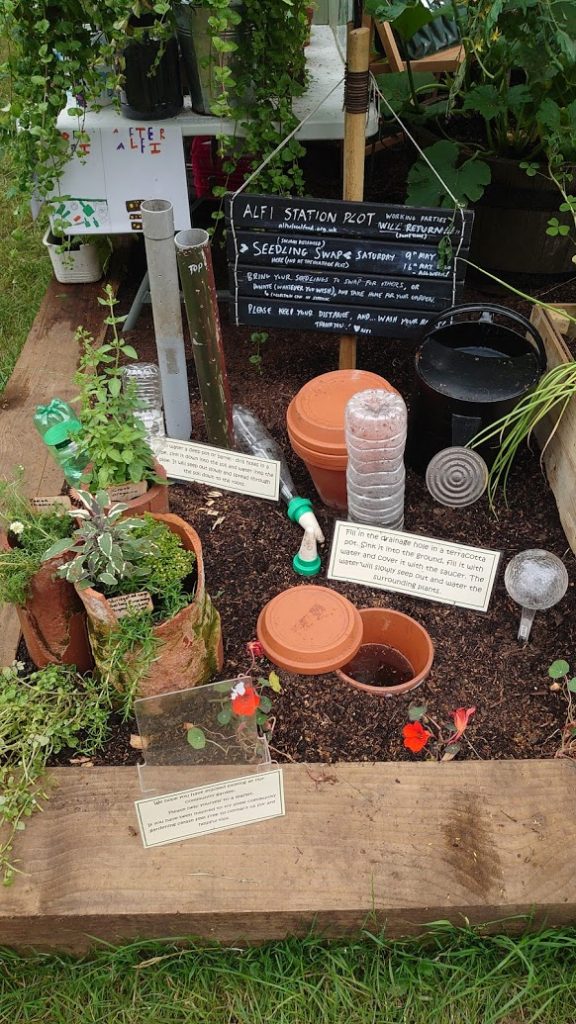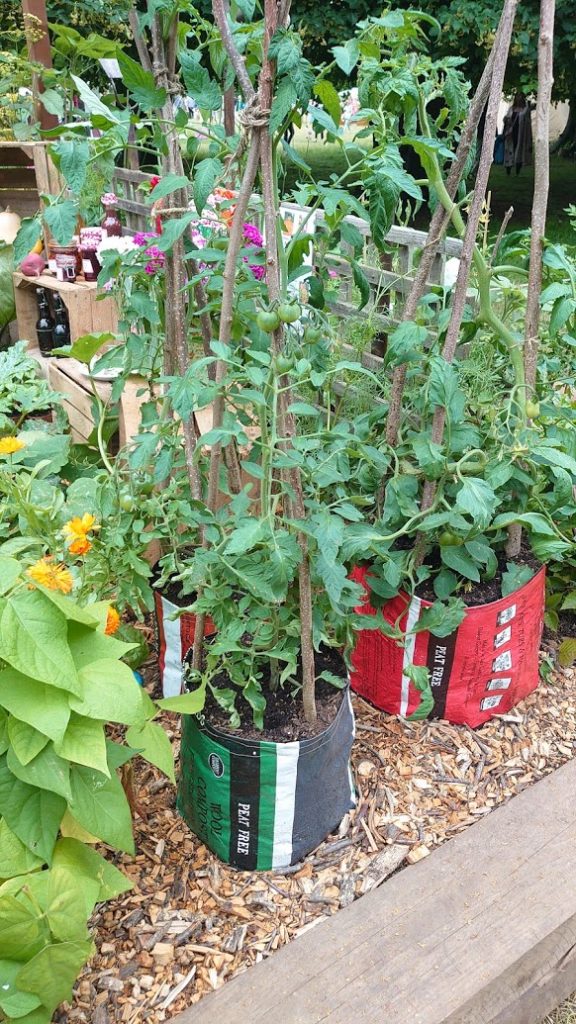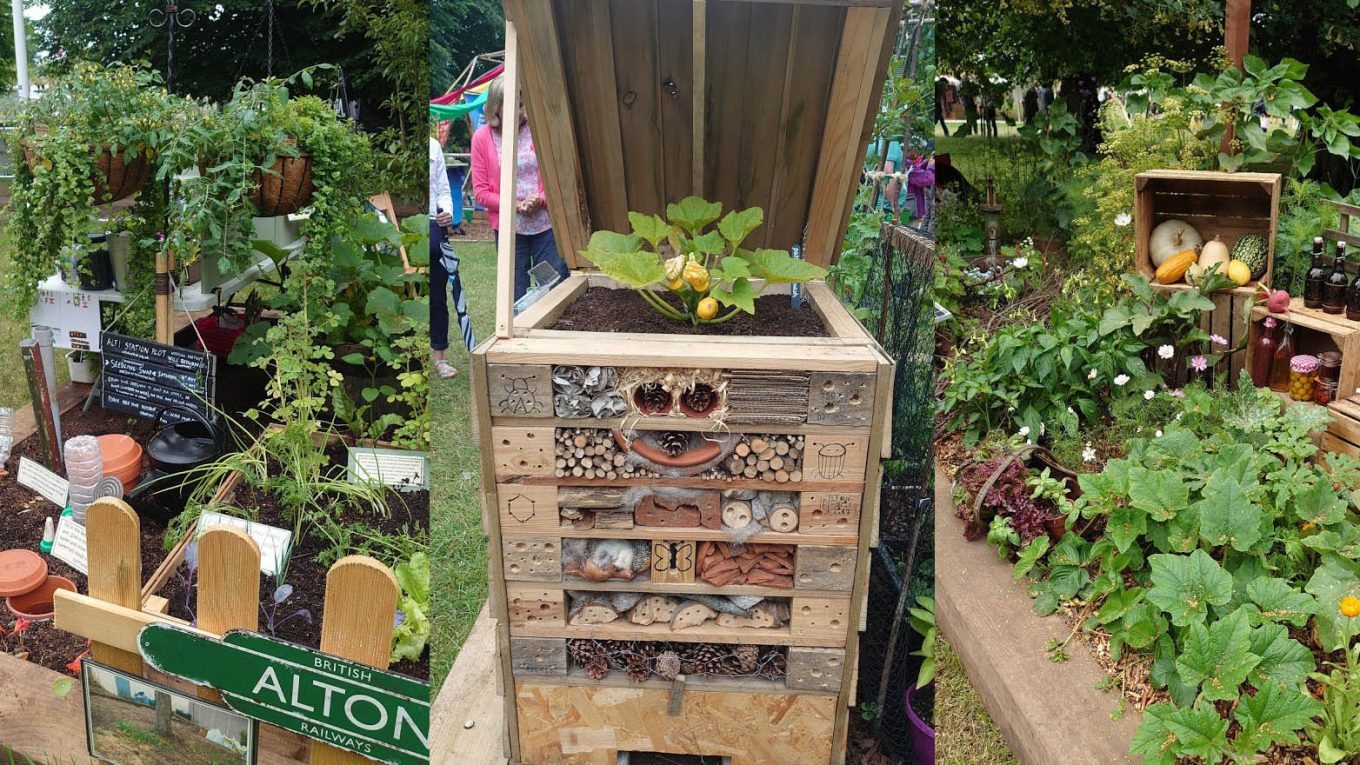RHS Hampton Court – the allotment area
There is so much to see at Hampton Court from beautiful prairie-style gardens to the more extreme plane wrecks, but I’m focusing on one area that I found truly inspiring and I hope the many visitors that I saw admiring the plot felt the same. This was the allotment zone, a new feature for the show. Every time I walked past, the area was thronged with people, all busy taking photos and engaging with the allotmenteers.
In this small area, lying between the no dig demonstration garden and the rose marquis was a shady area between the trees with 14 allotment plots. I loved the way that the very different community groups had made use of their small spaces. They had all taken time and effort to provide a wealth of information and if you took the time to talk to the allotmenteers you could learn even more.
My favourite had to be the Sandridge Road’s ‘A Sanctuary from Covid’. It reflected the way the allotments in St Albans had provided a safe space and had become a place of refuge during lockdown. I discovered that the demonstration plot was to be dismantled and taken back to the allotments – brilliant. I, like many others, loved the bug hotel standing proudly at the corner of the plot. The face was so clever and there was even a sleeping hedgehog (can you spot it?).

I like to grow the more unusual veg, so I was immediately drawn to the Afro European plot created by the Spurgeon Secret Garden Project in Stockwell, London. I have tried many of the crops on show but the taro was new. I asked about taro and was told that its a slow growing plant that likes it warm and humid, I loved the way the pallets has been painted black and were used to grow lots of herb. If you check out their Instagram account spurgeon_secretgarden you can see a photo of how they constructed it.


I used to live near Alton, so was intrigued to see what the Alton Local Food Initiative had created. The group has plots and planters around the town and South West Trains provided a disused plot of land by the railway station, hence the railway sign. It was such an informative plot. In the corner of the exhibit was a demonstration of different watering aids showing how you can save water by watering sensibly by using bottles and pots to get water direct to the plant roots.

Gardening Through Time from the Royal Paddock Allotments in Hampton Wick celebrates the allotments’ centenary so their design reflects their history and the changing styles in gardening. They were keen to show how the different gardening styles and reflect the diverse cultural mix and benefits to well being that gardening brings.

There was an area with the traditional rows of vegetable and some old tools, a cafe area with bottles of beer (!!) and pots of preserves, plus a wildlife area with a solar-powered water feature and wildlife friendly planting, I also spotted some #peatfree bags recycled as containers – well done guys!

And finally, another allotment group that has been around 100 years. Fulham Palace Meadows Allotment Association was established in 1916, during the First World War. Today there are 400 plots on the 14-acre site. They opted for a deconstructed site with lots of upcycled items such as old doors and windows surrounded by loads of vegetables and flowers.





